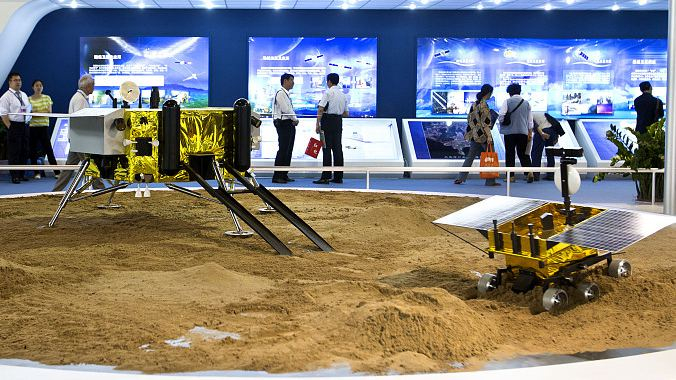
The models of Chang'e-3 lander(L) and rover. /VCG Photo
The models of Chang'e-3 lander(L) and rover. /VCG Photo
Chinese researchers have successfully conducted an in situ measurement of lunar dust at the landing site of the country's Chang'e-3 lunar probe.
Using a temperature-controlled sticky quartz crystal microbalance onboard the Chang'e-3 lander, researchers from the Lanzhou Institute of Physics determined that the total deposition mass at a height of 190 cm above the lunar surface during 12 lunar daytimes in the northern Mare Imbrium was about 0.0065 mg/cm2.
A paper on the research results has been published in the Journal of Geophysical Research: Planets, a leading international journal in the area.
Lunar dust is the most crucial space environment factor on the lunar surface, and also a priority factor to consider before humans return to the Moon.
Lunar dust attached to spacecraft can cause multiple malfunctions, such as mechanical structure sticking, failure of sealing mechanisms, and loss of sensitivity of optical systems. The measurement of annual lunar dust deposition caused by natural factors in the lunar surface environment is helpful to provide more accurate data for the design of subsequent spacecraft and provide reference information for future lunar missions.
Researchers said the results are "strategically important for future human and robotic lunar expeditions," which can "provide a valuable reference for the protection of payloads from exposure to lunar dust particles for future lunar exploration missions," said the paper.
A part of the second phase of China's lunar exploration program, Chang'e-3 was launched on December 2, 2013, and soft-landed on the Moon's Sinus Iridium, or the Bay of Rainbows, on December 14.
(With input from Xinhua News Agency)